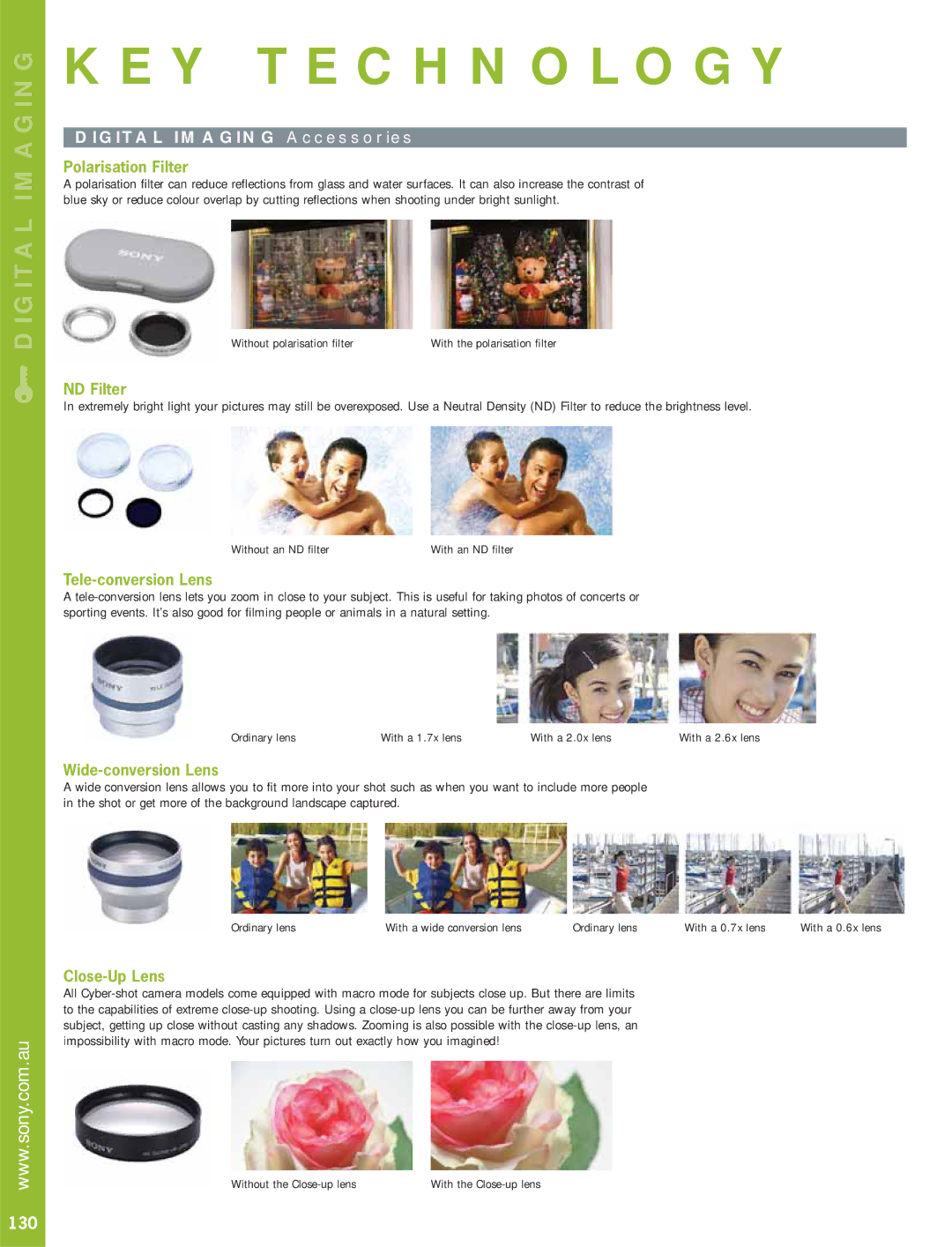
q DIGITAL IMAGING
KEY TECHNOLOGY
DIGITAL IMAGING Accessories
Polarisation Filter
A polarisation filter can reduce reflections from glass and water surfaces. It can also increase the contrast of blue sky or reduce colour overlap by cutting reflections when shooting under bright sunlight.
Without polarisation filter | With the polarisation filter |
ND Filter
In extremely bright light your pictures may still be overexposed. Use a Neutral Density (ND) Filter to reduce the brightness level.
www.sony.com.au
Without an ND filter | With an ND filter |
Tele-conversion Lens
A
Ordinary lens | With a 1.7x lens | With a 2.0x lens | With a 2.6x lens |
Wide-conversion Lens
A wide conversion lens allows you to fit more into your shot such as when you want to include more people in the shot or get more of the background landscape captured.
Ordinary lens | With a wide conversion lens | Ordinary lens | With a 0.7x lens | With a 0.6x lens |
Close-Up Lens
All
Without the | With the |
